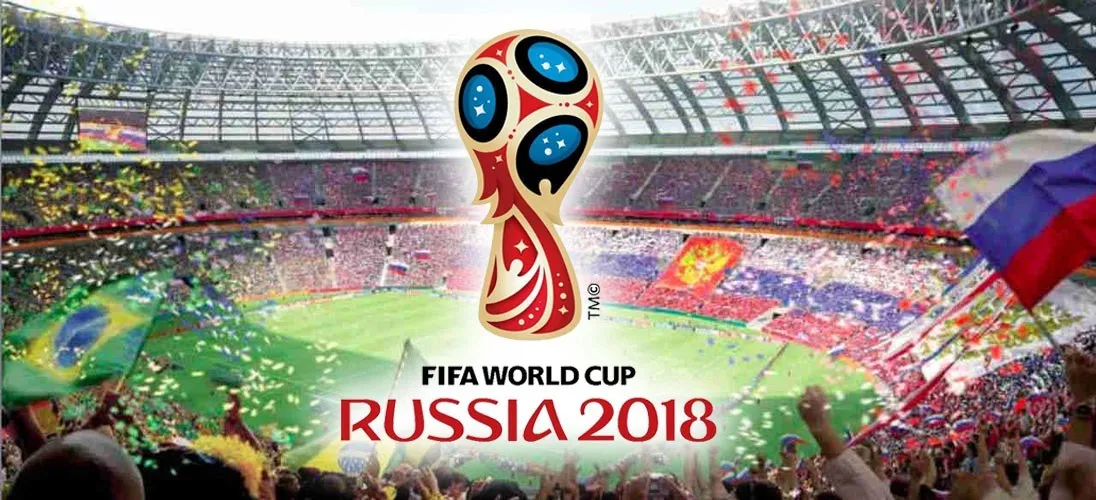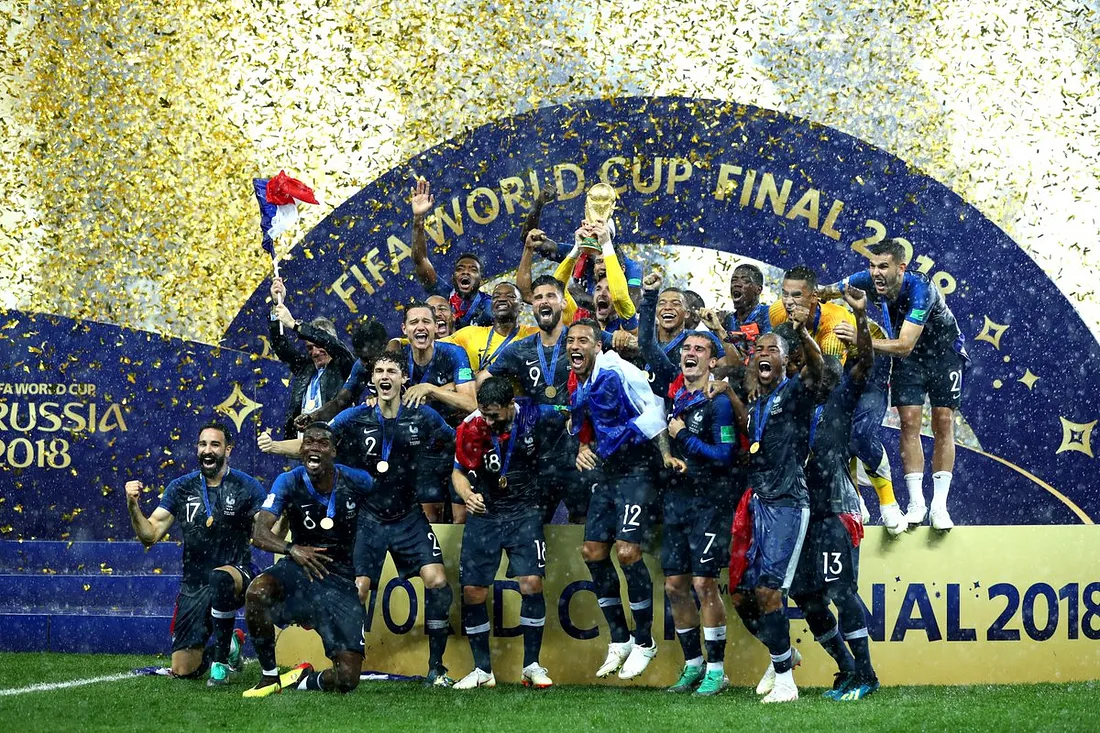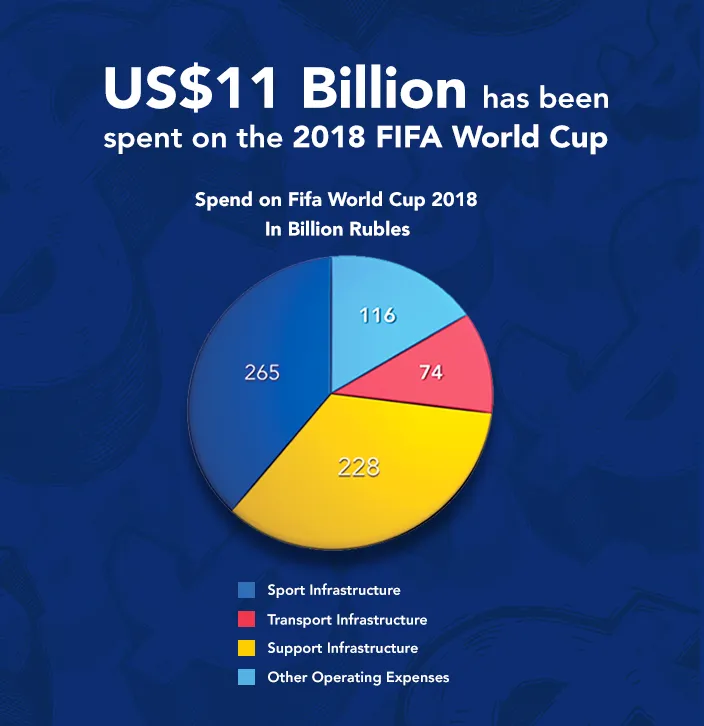
Reaping Demographic Dividends
June 28, 2018
“Think and Grow Workshop” by Celia Gates
September 9, 2018
Taking place every four years, the FIFA World Cup 2018 had a lot of entertainment hooked to it. The planet’s single biggest sporting event has come to an end recently and the football festivities certainly had a lot to offer. The entire world was put on hold with the palpable feeling of being alive and excited. Capturing the attention of everyone, this year’s FIFA World Cup was surely one to always remember. Radiating exuberance, football fans were eagerly waiting to see which country takes home the most coveted trophy. After all the enthralling and captivating matches, with France beating Croatia in the final match, the world cup has ended on 15th of July declaring France as the FIFA Champion for the next four years. Well done France!

As much as the FIFA World Cup is a sporting event, it is also an economic event with extremely expensive execution. From the building of stadiums and new airport terminals to construction and renovation of housing and medical infrastructure, the Russian government estimated its total spending on the 2018 FIFA World Cup at around US$ 11 billion. Out of this, US$ 4.22 billion was spent on the construction of sports infrastructure, US$ 3.63 billion on the improvement of transportation facilities in and around the match venues across Russia and US$ 1.18 billion has been spent on support infrastructure. The other operating expenses were estimated at US$ 1.85 billion.

The sports infrastructure spending included the building of 12 stadiums in 11 cities of Russia at the cost of US$ 4.2 billion. The 12 stadiums had a total seating capacity of 550,000 and they were built in Moscow, St. Petersburg, Sochi, Kazan, Saransk, Kaliningrad, Volgograd, Rostov-on-Don, Nizhny Novgorod, Yekaterinburg, and Samara. As many as 96 training sites with a capacity of 16,000 children and youngsters were developed all over the country for use beyond the World Cup tournament.
Similarly, Russia also spent profoundly on its transportation and utility infrastructure. The Aviation infrastructure was estimated at US$ 1.9 billion, which included 11 airports getting new terminals. The transportation and utility infrastructure spending included the construction of three new metro stations and 12 new roads and junctions. Twenty railway terminals and stations were also reconstructed and upgraded, and 178 km of roads were constructed or improved.
The budget allocated for the construction and renovation of housing and medical infrastructure was about US$ 1.18 billion. As per reports, as many as 13 hospitals were renovated or reconstructed. Similarly, 29 utility facilities and 12 power stations were constructed or upgraded. As many as 27 new hotels were constructed keeping in mind the rise in the tourist arrivals during – and beyond – as a result of the Football World Cup. Ten water supply and sewage systems projects were constructed and upgraded, and 4 infrastructure sewage systems upgrade projects were implemented. More than 800 hectares of parks and green zones were developed across multiple venues. Approximately, US$ 1.18 billion was invested in the construction and renovation of housing and medical infrastructure and power systems. These spends will have long-term utility and will continue to add to the Russian economy well beyond the World Cup.
The spike in the tourist arrival during the FIFA World Cup was certainly a great one. An additional 570,000 international tourists flew to Russia during June and July’18. With already 700,000 Russians as spectators of the match, the economic impact was most visible to the retailers, restaurants, and hotels. Visiting fans were estimated to spend from US$ 5,000 to 8,000 on an average, contributing an additional US$ 2.5-4 billion to consumption. It is also estimated that the countries which host certain events enjoy an increased tourist flow of approximately 25%, the following year.
The creation of additional jobs was also one of the major factors that positively affected the Russian economy. Around 220,000 jobs were created and maintained annually during the preparation and hosting of the World Cup, which led to increase in personal incomes by US$ 6.59 billion in the Russian households. An increase in temporary employment in sectors such as service, transport, and trade was also seen.
According to the Russian government data, 210,000 Russians acquired additional skills in preparation and hosting of large tournaments. Of these, 79,000 people upgraded their competency in the construction sector, 38,000 enhanced their skills in the hospitality industry, 18,000 people found new opportunities in transport and communication sectors, 18,000 upgraded their skills in utility, social and personal services, and 52,000 people received volunteer training. Around 5,000 people were involved in Public Administration and Security-related functions.
The planet’s biggest sporting event emerged as a major commercial phenomenon as well. Just like the FIFA tournaments have accelerated economic development of host countries in the past, they continue to have a positive long-term impact in the present as well. Evenly distributed over 2013 to 2017, the World Cup-related spends have undoubtedly expedited the Russian GDP. The Russian government estimated the combined impact of the World Cup on Russian GDP at US$ 13.80 billion which equals to about 1% of Russia’s GDP. The Russian government also estimated the boost for GDP to be between US$ 26 billion and US$ 30.8 billion over the 10 year period from 2013 to 2023.
Emerging as a major commercial phenomenon, this international sporting event had positive economic impacts on other countries and even on Nepal as well. With restaurants filled with eager football fans and jerseys selling out quickly, a boom in business was certainly visible. Considering this event as an opportunity, Nepal can also take baby steps in making contributions to its economy.

